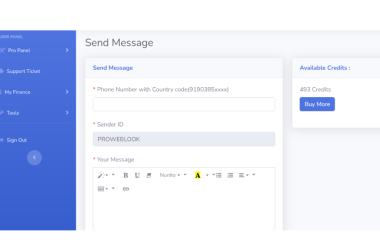Introduction.
Reverse IP Lookup: “In the vast internet, understanding website infrastructure is crucial amid millions of coexisting online entities.” Amidst the intricate web of IP addresses and domain names lies a powerful tool known as Reverse IP Lookup. “This tech, favored by cybersecurity experts, website admins, and marketers, unlocks online presence and connectivity mysteries effectively.”
Understanding Reverse IP Lookup.
“Reverse IP Lookup, or Reverse DNS, discovers domain names hosted on a specific IP address efficiently and comprehensively.” While traditional IP Lookup maps domain names to IP addresses, Reverse IP Lookup does the opposite. “Using Reverse IP Lookup or querying DNS directly retrieves domain names linked to an input IP address efficiently.”
The Mechanics Behind Reverse IP Lookup.
“Reverse IP Lookup involves querying DNS databases for domain names and their corresponding IP addresses, streamlining the process.” “Inputting an IP into a Reverse IP Lookup tool queries databases, fetching domain names associated with that IP efficiently. “The retrieved data is presented in a user-friendly format, often containing domain registration details and hosting provider information.”
Applications Across Industries.
Reverse IP Lookup finds applications across various sectors, each leveraging its capabilities in unique ways:
1. Cybersecurity: In the realm of cybersecurity, Reverse IP Lookup serves as a crucial investigative tool. Security analysts use it to identify potentially malicious websites or servers sharing the same IP address. “Analyzing suspicious IP’s domains, cybersecurity experts detect threats, track perpetrators, and strengthen defenses against future attacks.”
2. Website Management: Website owners and administrators rely on Reverse IP Lookup to monitor their hosting environment. By identifying other domains sharing the same server, they can assess resource allocation, server performance, and security risks. This insight enables them to optimize their hosting infrastructure, ensuring a seamless online experience for visitors.
3. Digital Marketing: In the competitive landscape of digital marketing, Reverse IP Lookup provides valuable insights into competitors’ online strategies. Marketers analyze the domains hosted on competitors’ IP addresses to gain insights into their target audience, content strategy, and marketing tactics. This information empowers marketers to refine their own strategies, identify market trends, and stay ahead of the competition.
4. Content Filtering: Reverse IP Lookup is also utilized in content filtering and parental control systems. By identifying the domains hosted on specific IP addresses, filtering software can block access to undesirable or inappropriate content. This feature ensures a safer browsing experience, especially for children and adolescents.
Challenges and Considerations.
Despite its utility, Reverse IP Lookup faces several challenges and considerations:
1. Privacy Concerns: Reverse IP Lookup raises privacy concerns as it can potentially reveal sensitive information about website owners and visitors. The tool must be used responsibly and in compliance with data protection regulations to safeguard individuals’ privacy rights.
2. Accuracy and Reliability: The accuracy and reliability of Reverse IP Lookup results depend on the quality and comprehensiveness of DNS databases queried. Outdated or incomplete information may lead to inaccuracies, impacting the effectiveness of the tool in certain cases.
3. Dynamic IP Addresses: Websites hosted on dynamic IP addresses present challenges for Reverse IP Lookup tools. As the IP address associated with a domain name may change over time, maintaining an accurate and up-to-date database becomes challenging.
4. Legal and Ethical Considerations: The use of Reverse IP Lookup must adhere to legal and ethical standards. Users must obtain proper authorization and consent before conducting Reverse IP Lookup queries, especially in cases involving private or sensitive information.
Future Directions and Innovations.
As technology continues to evolve, Reverse IP Lookup is poised to undergo further advancements and innovations. Enhanced algorithms, improved data analytics, and integration with artificial intelligence are expected to enhance the accuracy and efficiency of Reverse IP Lookup tools. Additionally, advancements in cybersecurity protocols and data privacy regulations will shape the future landscape of Reverse IP Lookup usage.
Conclusion.
Reverse IP Lookup stands as a powerful tool in the arsenal of cybersecurity professionals, website administrators, and digital marketers alike. Its ability to unveil the interconnected web of domain names sharing the same IP address provides invaluable insights into the online landscape. However, it’s essential to navigate the challenges and considerations associated with Reverse IP Lookup responsibly and ethically. By leveraging its capabilities effectively, individuals and organizations can navigate the complexities of the internet with greater confidence and security, ensuring a safer and more transparent online experience for all.
The Future of IP Lookup.
The future of Reverse IP Lookup holds promise as technology continues to advance. “As big data analytics and machine learning algorithms continue to advance, we can anticipate a significant evolution in Reverse IP Lookup tools, leading to heightened levels of sophistication and accuracy.” These advancements will enable users to extract deeper insights from the vast pool of data collected through Reverse IP Lookup queries.
“Additionally, integrating Reverse IP Lookup with cybersecurity tools will streamline threat detection and incident response processes effectively.” By combining Reverse IP Lookup data with threat intelligence feeds, intrusion detection systems, and security information and event management (SIEM) solutions, organizations can enhance their overall security posture and fortify their defenses against cyber threats.
Another avenue of exploration is the utilization of Reverse IP Lookup in the context of internet of things (IoT) security. With the proliferation of connected devices and the growing threat landscape targeting IoT ecosystems, Reverse IP Lookup can play a vital role in identifying vulnerable devices and potential attack vectors. By correlating IoT device IP addresses with known threat indicators, organizations can proactively identify and remediate security vulnerabilities in their IoT deployments.
In summary, the future of Reverse IP Lookup is bright, with opportunities for innovation and advancement across various domains. By leveraging emerging technologies, predictive analytics, and integrations with existing cybersecurity frameworks, Reverse IP Lookup will continue to be a valuable tool for identifying, analyzing, and mitigating cyber threats in an increasingly interconnected world. As organizations strive to enhance their cybersecurity posture and protect against evolving threats, Reverse IP Lookup will remain an essential component of their defense strategy.
Kindly check our website Proweblook for more Web API tools. More resources can be found on our Github page, Social Channels are Twitter, Facebook & Youtube.








